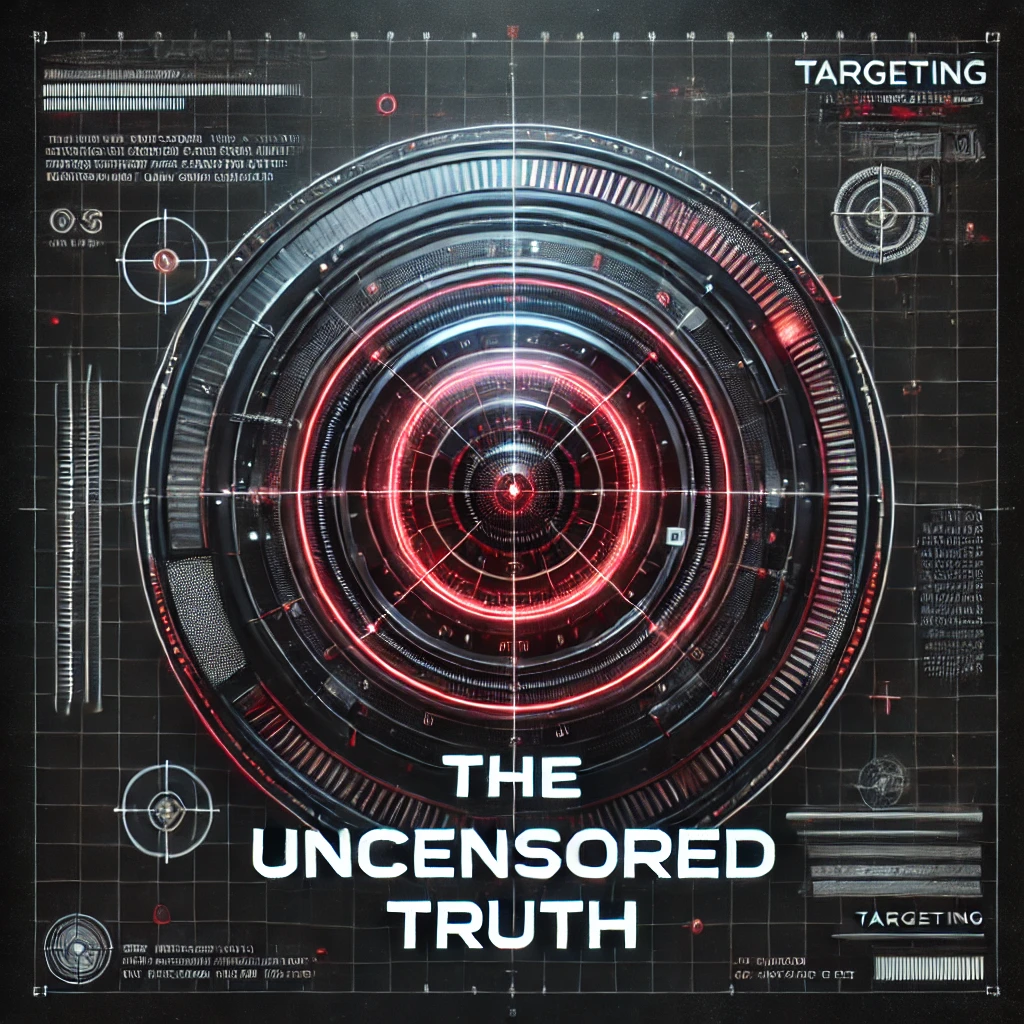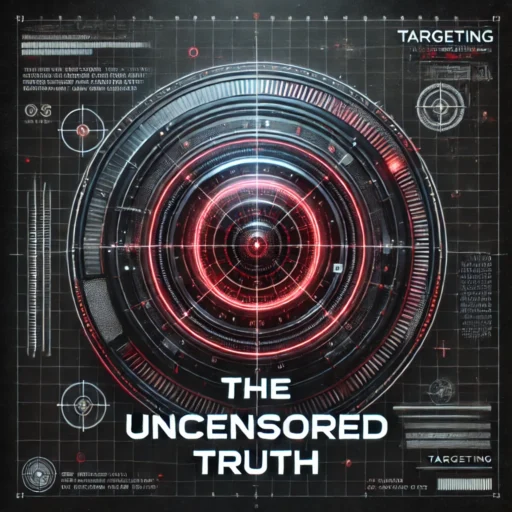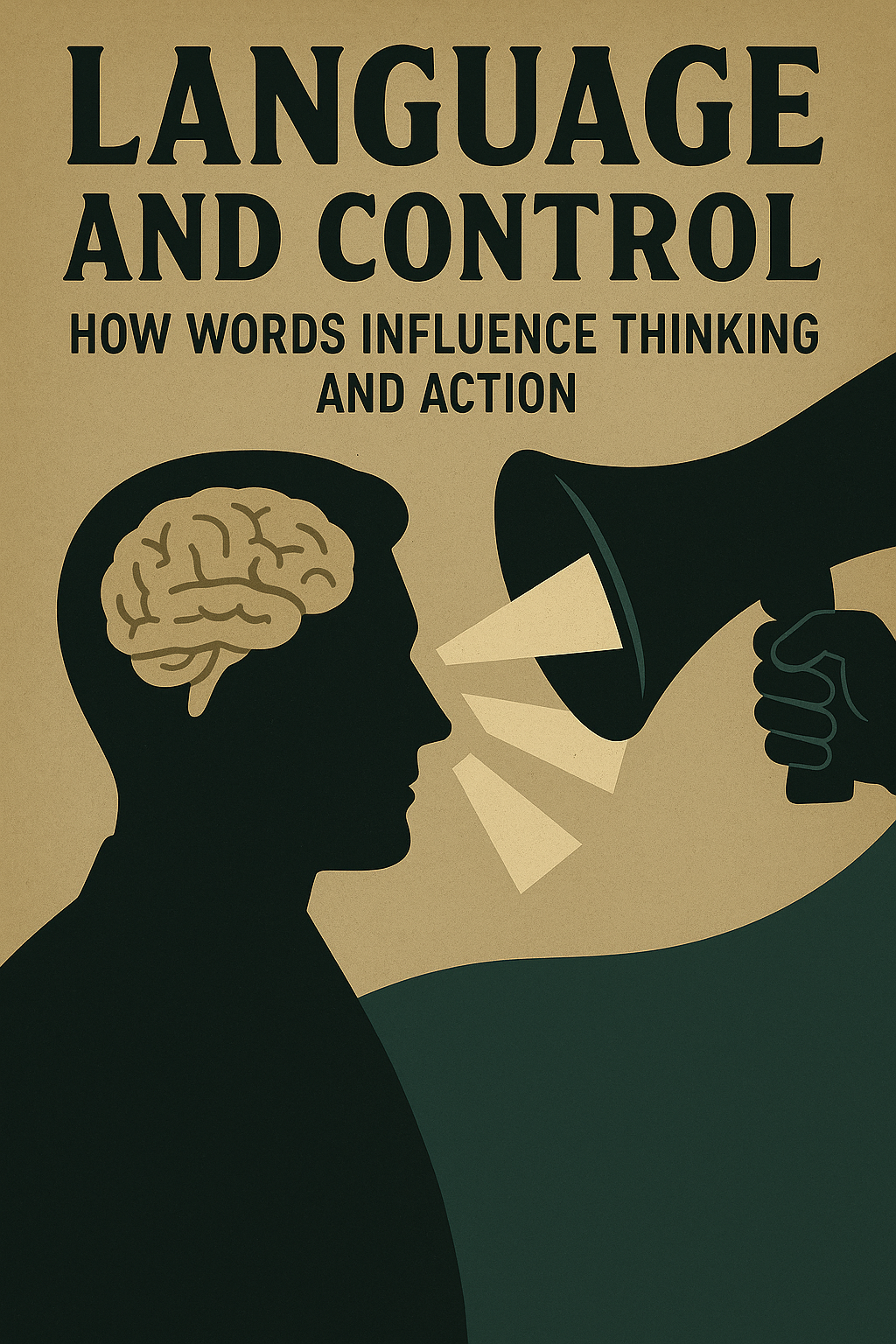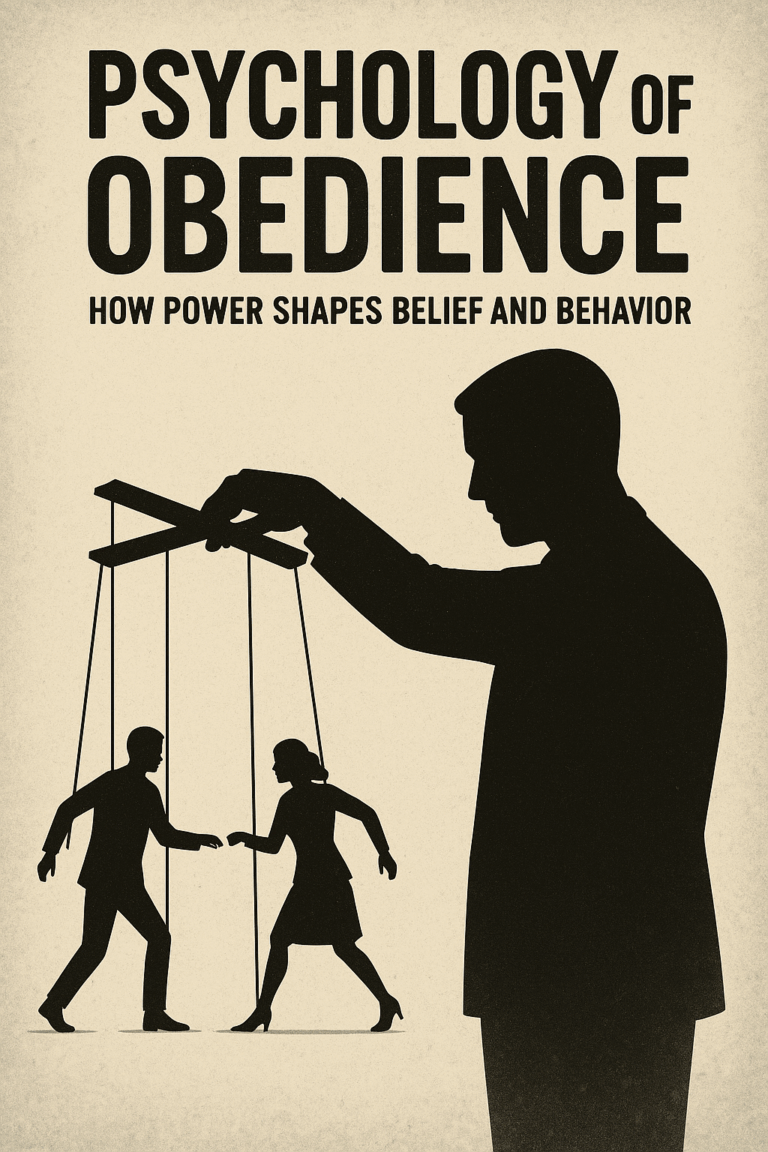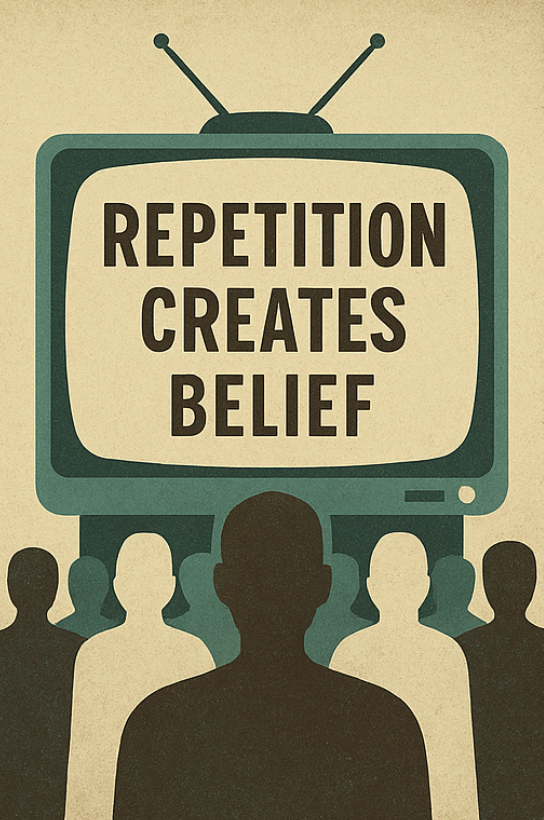The way we describe and interpret events can powerfully shape our thoughts, feelings, and actions. In psychology, reframing refers to changing the language or perspective around a situation so that its meaning shifts. By altering the “frame” through which we see something, we can change our emotional response and even our behavior. This concept is at the heart of many therapeutic techniques and has broad implications beyond therapy – from advertising and media to politics and culture. As George Orwell famously observed, “if thought corrupts language, language can also corrupt thought”. In other words, language doesn’t just reflect what we think; it actively steers how we think. In our previous article on fear and free speech, we explored how social dynamics suppress open dialogue. This article builds on that foundation by examining how language and control shape not just what we’re allowed to say — but how we think. We’ll explore how reframing is used in psychology to promote well-being, examine insights from major thinkers about perception and language, and analyze historical and modern examples of reframing in advertising, media, and politics. Throughout, we maintain a balanced, curious perspective on how language and control can be used to influence thought and behavior.
Reframing in Psychological Therapy
Reframing is a core technique in several psychological therapies, especially those within the cognitive-behavioral tradition. It involves helping a person shift their interpretation of events or ideas in order to change emotional outcomes in a positive way. By looking at a problem through a different lens, the individual can often find new solutions or relief from distress. Below are some key therapeutic approaches that use reframing to transform perception and meaning:
Cognitive Behavioral Therapy (CBT): CBT is built on the insight that “the way we think affects the way we feel”. Pioneered by Aaron T. Beck in the 1960s, CBT introduced techniques of cognitive restructuring (also known as cognitive reframing) to identify and change negative thought patterns. Beck found that patients with depression often had persistent negative beliefs about themselves and their experiences. By teaching patients to challenge these automatic thoughts and consider alternative interpretations, their mood and behavior improved. As Beck described, cognitive therapy aims to “alleviate psychological stresses by correcting faulty conceptions and self-signals.
By correcting erroneous beliefs we can lower excessive reactions.”. In practice, a CBT therapist helps a client take a stressful thought (e.g. “I’m a failure because I lost my job”) and reframe it into a more balanced view (e.g. “I lost one job, but I also have skills and can find new opportunities”). Over time, this reframing reduces hopelessness and motivates constructive action. Albert Ellis, who developed Rational Emotive Behavior Therapy (a form of CBT), often reminded clients that “People and things do not upset us. Rather, we upset ourselves by believing that they can upset us.”. his quote, echoing the Stoic philosopher Epictetus from nearly 2,000 years earlier, encapsulates the therapeutic goal of reframing – changing one’s belief about an event to change the emotional outcome. Indeed, Epictetus originally taught that “People are not disturbed by things that happen, but by their opinion of these things. If our interpretation is what hurts us, then shifting our interpretation can free us from that hurt. This is one of the clearest psychological illustrations of the relationship between language and control.
Dialectical Behavior Therapy (DBT): DBT, developed by Marsha Linehan, is an offshoot of CBT that emphasizes acceptance and change, particularly for people with intense emotions. Reframing is also woven into DBT’s skillset. DBT encourages a dialectical outlook – holding two seemingly opposite truths at once – to avoid all-or-nothing thinking. For example, a client learns they can accept themselves as doing their best and still strive to change harmful behaviors. In the Distress Tolerance module of DBT, clients practice coping with crises by reframing their thoughts about the situation. A concrete DBT skill is “Check the Facts,” where an individual pauses to reconsider whether their interpretation of an upsetting event is fully accurate. By examining evidence, they might reframe “This is the worst disaster of my life” into “This is very hard, but I’ve overcome similar challenges.” In this way, DBT uses reframing to transform negative, automatic judgments into more mindful and moderate views, which in turn lowers anxiety, anger, or despair. DBT’s emphasis on balancing opposites (the dialectic of acceptance vs. change) is itself a form of reframing one’s perspective – teaching that two contradictory thoughts can coexist, and that reframing a situation from another angle can lead to emotional balance rather than extremes. This balance also reveals the subtle interplay between language and control in emotional regulation.
Other Therapeutic Approaches: Many other therapy modalities use reframing techniques. In Narrative Therapy, for instance, clients are encouraged to “rewrite” the story they tell about their lives. A problem can be externalized and reframed as separate from the person (“I am not broken; I am dealing with a challenge”). Family therapists often reframe a family’s viewpoint on an issue, perhaps casting a teenager’s defiance not simply as misbehavior but as a form of seeking autonomy – a reframing that can open up empathy and new solutions. Positive psychology interventions also rely on reframing, such as finding the “silver lining” or reinterpreting failures as learning opportunities. All these approaches share the belief that meaning is mutable: if you can change the meaning an individual ascribes to events, you can change their emotional trajectory. As one psychotherapy text puts it, cognitive reframing is a “therapeutic process that helps the client discover, challenge, and modify or replace their negative, irrational thoughts”, thereby cultivating more positive and functional thought habits. This process has proven effective for problems ranging from depression and anxiety to anger management, because it directly targets the interpretations that drive distress. It’s another context where language and control determine how much agency a person feels over their own story.
In summary, reframing in therapy is about empowering people to shift perspective. Instead of being trapped by a habitual negative interpretation, a person learns to ask: “Is there another way to look at this?” By answering that question, they gain control over their reactions. The consistent outcome reported across CBT, DBT, and related therapies is that changing how one thinks about a situation (through deliberate reframing) can dramatically change how one feels. In the words of Aaron Beck, correcting our biased thinking “damp[s] down or alter[s] excessive, inappropriate emotional reactions”. Reframing thus transforms a vicious cycle of negative thoughts and feelings into a virtuous cycle of constructive interpretation and improved well-being. This dynamic, again, speaks to the tight link between language and control within therapeutic change.
Language and Control in Thought: Insights from Psychology and Philosophy
Why does reframing work so effectively? The answer lies in the deep connection between language, perception, and thought — a connection that has been explored by both psychologists and philosophers for decades. Our minds do not passively record reality; rather, we actively interpret and construct reality through conceptual frames and language. This section highlights insights from major figures in psychology and philosophy on how framing and interpretation shape our cognition and experience.
Cognitive Schemas and Core Beliefs: In cognitive psychology, Aaron Beck and Albert Ellis showed that people operate through internal “schemas” or belief systems that filter their experience. Beck noted that depressed patients, for example, tend to interpret neutral events in an overly negative way due to deeply held beliefs like “I am worthless”. These interpretations then reinforce the depression in a feedback loop. The key insight is that thoughts act as filters: two people can experience the same event and frame it in entirely different ways internally. As Beck succinctly wrote, “Cognitive therapy seeks to alleviate psychological stresses by correcting faulty conceptions… By correcting erroneous beliefs we can lower excessive reactions.”. In other words, our beliefs about an event determine our emotional response, more so than the event itself. This idea has roots in ancient philosophy as well. The Stoic philosopher Epictetus observed that “People are not disturbed by things that happen, but by their opinion of these things” – a maxim later echoed by Ellis in modern therapy. Thus, across millennia, thinkers have recognized that interpretation is powerful: change the interpretation (the frame of meaning), and you change the experience. This process again reveals the practical implications of language and control in shaping human emotion.
Language as a Cognitive Frame: How we word our thoughts can influence what we think is even possible. The relationship between language and thought has been a subject of debate in philosophy of mind and linguistics. One extreme view, known as the Sapir-Whorf hypothesis (or linguistic relativity), suggests that the language we speak determines or heavily influences the thoughts we can have. While strong linguistic determinism is controversial, there is evidence that language can predispose us to notice certain things or think in certain categories. For example, having different words for color shades can sharpen perception of those differences; having language that labels people in a certain way can shape how we perceive them. The philosopher Ludwig Wittgenstein once said, “The limits of my language mean the limits of my world,” implying that our language sets boundaries on what we can conceptualize.
Modern cognitive science also notes that metaphors in language reflect and shape how we conceptualize abstract ideas. Cognitive linguist George Lakoff has famously shown that our political and social reasoning is often governed by metaphorical frames (for instance, thinking of a nation as a “family” leads to different policy attitudes than thinking of it as a “business”). According to Lakoff, “framing influences reasoning, [such that] the way we say something often matters much more than what we say.”. An illustration of this is how people react differently to a policy described with one set of terms versus another – even if the underlying facts are the same. Simply calling something “welfare” versus “help for the needy,” or “tax relief” versus “tax cut,” can evoke opposite reactions, because each phrase activates different mental frames (e.g. “relief” implies something one is saved from). Lakoff argues that we cannot avoid framing: “Unless you frame yourself, others will frame you — the media, your enemies, your competitors, your well-meaning friends.”. In other words, if we do not choose our own language to define an issue, someone else’s language will define it for us. This underscores that language is never neutral – it’s always pointing our thoughts in a particular direction, reminding us that language and control are inseparable in public discourse.
Power Structures, Social Framing, and the Role of Language and Control
Philosophers like Michel Foucault took the idea of framing to a societal level with the concept of discourse. Foucault studied how institutions (like medicine, law, or education) establish dominant discourses – frameworks of language and knowledge that shape how society perceives reality. He noted that discourse isn’t just passive description; it actively produces the subjects and ideas it speaks about. As one commentator summarizes Foucault’s view, “discourse…produces knowledge and meaning,” creating “practices that systematically form the objects of which they speak.”.
For example, the medical discourse of the 19th century framed certain behaviors as “mental illness,” which in turn led society to literally see and treat those individuals as ill. By controlling the language and categories (the discourse), institutions influence how people think about what is “normal” or “deviant.” Foucault showed that power and language are intertwined: those who control the prevailing narratives have a form of control over minds. In other words, control over discourse is control over perception – a key insight in understanding the mechanics of language and control.
A practical example might be how the phrase “war on terror” after 2001 framed global conflict in a way that rallied public opinion – portraying it as a moral struggle against an abstract enemy, which shaped public perception and justified certain policies. The words chosen by leaders and media created a lens through which events were interpreted. Foucault’s insight is that such frames often operate invisibly; we take them as “truth” or “common sense” because they permeate discourse, when in fact they were constructed to serve particular interests or power structures. This calls for a critical awareness of language – recognizing when a label or narrative is guiding our thought without our realization.
Interpretation and Meaning
Other philosophers have touched on the theme that humans are meaning-makers and that this can be both empowering and limiting. Existential psychiatrist Viktor Frankl, for instance, emphasized the freedom to choose one’s attitude and find meaning even in extreme suffering. In Man’s Search for Meaning, Frankl wrote that everything can be taken from a person “except for one thing: the last of the human freedoms — to choose one’s attitude in any given set of circumstances.” This is essentially a call to reframe one’s perspective: even in a concentration camp, Frankl found that seeing his suffering through a frame of meaning (a test of inner strength, a way to fulfill a purpose) was life-saving. His work is a powerful testament to how reframing one’s situation in terms of purpose or values can alter one’s entire experience of reality.
On the flip side, philosophers like Friedrich Nietzsche warned about how interpretations can be imposed on us: “All things are subject to interpretation; whichever interpretation prevails at a given time is a function of power and not truth.” This resonates with both Foucault’s and Orwell’s concerns – that we must be vigilant about whose frame we are adopting. Orwell, writing about political language, noted that insincere or manipulative language can make “lies sound truthful and murder respectable” by dressing them in appealing frames. This concern about rhetorical deception again highlights the complex interaction between language and control.
Hence, understanding framing isn’t just an academic exercise; it’s a practical tool for intellectual freedom. By seeing how language shapes thought, we can resist being unconsciously controlled by particular frames and instead choose our interpretations more deliberately. This intellectual vigilance is essential in a world where language and control are used not only to persuade, but to govern behavior and restrict dissent.
Insights from psychology and philosophy converge on a key point: our experience of reality is profoundly shaped by how we frame it in language and thought. Whether in personal cognition (schemas and beliefs), in communal language (metaphors and discourse), or in the very definitions of knowledge, the frames we use can expand or limit our understanding. Reframing, then, is not only a therapeutic technique but a fundamental human capacity – a way to assert control over meaning. It allows us to transform our inner narrative and to question the narratives presented to us by others. As these thinkers suggest, language can be either a cage or a tool for liberation, depending on how it is used. The constant interplay between language and control makes it vital to remain conscious of the frames we adopt, and of those imposed upon us.
Advertising and the Subtle Art of Language and Control
Advertising is often described as “applied psychology,” and one of its most potent tools is reframing. The goal of any advertisement is to shape public perception of a product or idea – essentially to tell a story about why it matters or what it signifies. Successful marketing campaigns have repeatedly demonstrated that changing the frame around a product can dramatically shift people’s attitudes and behavior. In some cases, ads don’t change the product at all; they change the meaning of the product in the audience’s mind. This process is a clear intersection of language and control, where narrative architecture becomes a lever for consumer behavior.
The Marlboro Man (1950s–1990s): One of the most iconic advertising reframes was the Marlboro cigarette campaign. In the early 1950s, filtered cigarettes (including Marlboro) were seen as “mild” and were primarily marketed to women – in fact, Marlboro’s slogan was “Mild as May,” and it was considered a feminine brand. This was a problem for Philip Morris, the maker of Marlboro, because health concerns were pushing more smokers toward filtered cigarettes, but many men avoided Marlboro due to its feminine image. Enter advertising genius Leo Burnett, who completely reframed Marlboro’s identity by introducing the Marlboro Man in 1954. The Marlboro Man campaign featured rugged cowboys in the American West – images of masculinity, independence, and toughness. In a matter of months, this new frame “transformed a feminine brand carrying the slogan ‘Mild as May’ into a masculine one”. Simply by associating Marlboro with cowboys and the mythos of the Old West, the ads changed how the public perceived filtered cigarettes. They were no longer a lady’s product; they were the choice of rugged men. This reframing was so successful that Marlboro became the best-selling cigarette brand worldwide, and the Marlboro Man is still remembered as one of the most effective advertising icons. The content of the cigarette didn’t change – only the story around it did. This case shows how reframing can tap into cultural values (like the American ideal of the cowboy) to alter behavior (men embracing Marlboro). Of course, it also had a dark side: by romanticizing smoking, the campaign contributed to public health harms. Nonetheless, as a feat of persuasion, it remains a textbook example of reframing in marketing. The strategy was a masterclass in language and control: redefining the product’s image in order to control perception and drive mass adoption.
“A Diamond is Forever” – De Beers (1947): Today, it’s taken for granted in many cultures that an engagement ring should contain a diamond, symbolizing eternal love. But this idea was intentionally created by advertising. In the 1930s and 1940s, the diamond market was weak; diamonds were not universally seen as a necessary part of marriage. The De Beers company changed that by launching a campaign in 1947 with the slogan “A Diamond is Forever.” This brilliant piece of messaging reframed the diamond from a mere gemstone to a symbol of enduring love and commitment. The campaign sought to “persuade the consumer that an engagement ring is indispensable, and that a diamond is the only acceptable stone for an engagement ring.”. In other words, De Beers set out to make diamonds culturally mandatory for engagements by associating them with something deeply emotional and timeless. The strategy worked phenomenally. Over the following decades, demand for diamond rings skyrocketed, and giving a diamond came to be seen as “traditional” when in fact it was the result of a modern marketing reframing. The phrase “A Diamond is Forever” itself frames the diamond as not just a rock but as a lasting testament to a relationship’s permanence. By changing the narrative – diamonds equal love, diamonds equal forever – De Beers altered public behavior (men felt obligated to buy expensive diamond rings, and women came to expect them). This campaign was so influential that in 2000, Advertising Age named “A Diamond is Forever” the greatest advertising slogan of the 20th century. It’s a powerful example of how language (a single resonant slogan) can shape societal norms and personal decisions on a large scale. It also exemplifies how language and control can operate subtly through aspirational messaging to entrench consumer habits.
Dove’s “Campaign for Real Beauty” (2004–present): In the 21st century, a notable example of reframing in advertising is Dove’s Campaign for Real Beauty. Traditional beauty ads for decades had framed beauty in very narrow terms – usually presenting young, extremely thin, airbrushed models as the ideal. This frame often left consumers (especially women) feeling inadequate and was criticized for promoting unrealistic standards. Dove (a Unilever brand) decided to flip the script. In 2004, they launched a campaign that reframed the definition of beauty to be more inclusive and genuine. Dove’s ads featured women of diverse body types, ages, and ethnicities, proudly presented as real beauty. The campaign declared that beauty is not one-size-fits-all – a direct challenge to the prevailing frame. By “discarding stereotypes, [Dove] broke with convention by featuring real women instead of models in its ads – a move that resonated with audiences all over the world.”. The reframing here was to position “real beauty” (natural, varied, and unretouched) against the narrow beauty myth. This struck an emotional chord with consumers who were eager for a positive, empowering message. The success of the campaign not only improved Dove’s sales and brand loyalty, but it also sparked broader conversations in media and advertising about representation. In fact, Dove’s effort was so influential that Advertising Age ranked it as one of the best campaigns of the 21st century, and it has continued for decades. This example illustrates reframing used in a socially positive way: by changing the frame from “beauty = model perfection” to “beauty = confidence in your own skin,” the campaign aimed to alter how people (especially young girls) saw themselves and to encourage self-esteem. It’s a reminder that reframing can be employed not just to sell products, but to promote social change and challenge harmful norms. Once again, we see how language and control intersect: reframing beauty norms allowed a brand to simultaneously drive profit and shift public consciousness.
Other Examples in Marketing: Virtually every successful brand has some element of reframing. Apple’s famous “1984” Super Bowl commercial reframed the personal computer from a niche office machine into a symbol of rebellion and creativity (casting IBM as Big Brother and Apple as the liberator). Nike’s “Just Do It” slogan reframed athletic activity from a chore into an expression of determination and empowerment. Avis car rental in the 1960s reframed being the #2 company into an advantage with the slogan “We Try Harder,” turning a weakness into a strength in consumers’ minds. In each case, the facts didn’t change – Apple was still selling computers, Nike shoes, Avis rentals – but the story around the product changed to make it more appealing. A clever frame can take an ordinary item and give it an aura of excitement, urgency, or value. Modern marketers also pay close attention to language framing: for instance, a product might be advertised as “90% fat-free” rather than “10% fat” because the former wording frames it positively (this is an example of gain-framing rather than loss-framing). The underlying nutritional fact is identical, but consumer response can differ based on which frame is used.
Ultimately, these cases show how language and control are intimately linked in advertising and branding. Each slogan, narrative, and visual cue functions not just to communicate but to guide – subtly steering thought, emotion, and decision-making. Whether used to sell ideals or illusions, reframing relies on the power of words and context to reshape what we believe is valuable, necessary, or true.
Language and Control in Media, Politics, and Public Discourse
Beyond the realm of advertising, framing is employed on a larger scale in media, politics, and culture to influence beliefs and behavior. Every day, institutions and communicators present information in particular ways to guide public interpretation – often intentionally, sometimes unconsciously. This section explores how reframing works at scale, through news media, political language, and popular culture, with examples ranging from historical propaganda to modern social media. Importantly, framing is a tool used across the spectrum of ideologies and interests; we approach it here in a balanced, non-partisan manner, examining how different actors use language to shape thought. Language and control play a pivotal role in how these frames are established and normalized.
Media Framing of News: News organizations make choices in how they report stories – which aspects to emphasize, which words to use – and these choices can frame how audiences understand events. For example, consider coverage of a public protest. One outlet might label it a “protest” or “demonstration,” highlighting the protesters’ grievances; another might call it a “riot” or “mob,” emphasizing disorder. The event may be the same, but the framing differs. A 2012 study published in Communication Studies found that even subtle word choices in news headlines influence readers’ interpretations and memory of events. This isn’t necessarily propaganda in a sinister sense – it reflects the inevitable role of perspective. But it does show how language shapes perception.
One particularly striking example of media framing occurred during the coverage of Hurricane Katrina in 2005. Photos of white victims carrying supplies were often labeled as “finding” food, while similar photos of Black victims were described as “looting.” The language used conveyed unconscious biases that framed the same behavior differently based on race. This is an instance of how language and control intersect to reinforce social narratives. The media didn’t invent these stereotypes, but it unwittingly amplified them through framing choices. Similar dynamics are at play in coverage of crime, politics, and foreign affairs, where linguistic framing can subtly (or blatantly) affect public sentiment.
Political Framing and Euphemism: In politics, reframing is ubiquitous. Leaders and speechwriters carefully choose their words to promote certain interpretations and avoid others. Euphemisms, in particular, are powerful tools of political language. Consider the shift from “civilian casualties” to “collateral damage” – the latter softens the reality of wartime death and implies technical necessity rather than human tragedy. Similarly, “enhanced interrogation techniques” was the phrase used by U.S. officials to describe practices widely considered torture. These euphemisms do more than obscure; they reframe acts as acceptable, necessary, or even benevolent. As Orwell warned, political language often aims “to make lies sound truthful and murder respectable.” Here, language and control work in tandem: by managing perception through framing, political actors shape public tolerance and understanding.
Narrative Control and Social Media: In the digital age, control over narratives has become both more decentralized and more chaotic. Social media platforms have given individuals a voice, but they have also become battlegrounds for framing contests. Hashtags, memes, and viral posts act as tools of reframing, rapidly shaping how events are perceived. At the same time, algorithms determine which frames get amplified – creating feedback loops where certain interpretations dominate not because they are truer, but because they are more clickable. This is where language and control become intertwined with technology.
Take, for instance, the framing of public health policy during the COVID-19 pandemic. Some commentators framed lockdowns as necessary health measures to save lives, while others described them as authoritarian overreach. The same data could be framed in terms of deaths prevented or freedoms curtailed. Even mask-wearing became subject to competing narratives – framed either as a civic duty or as a symbol of compliance. The rise of phrases like “the science is settled” was itself a form of rhetorical framing: it implied that debate was over, regardless of lingering uncertainties. In this context, language and control were exercised not only by governments and institutions but by influencers, journalists, and users themselves.
Reframing and Identity Politics: One of the most contentious areas of modern discourse involves identity. Terms like “privilege,” “microaggression,” or “systemic racism” are not just descriptors – they are frames that shape how people understand social dynamics. For instance, describing a hiring gap as a result of “bias” versus “meritocracy” leads to entirely different conclusions. Advocates on all sides understand the stakes of language. As philosopher Judith Butler argued, language is not merely representational – it is performative; it helps constitute social reality. Changing the frame changes the world people live in. Hence, there are often fierce battles over terminology. Whether one says “illegal immigrant” or “undocumented worker” is not a neutral choice – it frames the subject morally and politically. And in doing so, it demonstrates again the connection between language and control.
Framing in Climate Communication: Environmental messaging also offers a prime case study in how language and control interact to shape belief. Climate change, for example, has been framed variously as a scientific crisis, an economic opportunity, a national security threat, or an existential moral challenge. Each frame elicits different emotional reactions and policy preferences. Calling it “global warming” versus “climate emergency” triggers different levels of perceived urgency. Studies show that “doom and gloom” messaging can sometimes backfire, causing apathy or denial, while solution-oriented frames foster engagement.
Activists, governments, and industries all try to control the narrative. Oil companies, for instance, historically framed environmental regulation as an economic burden. Later, in a striking reframing effort, some began branding themselves as leaders in “clean energy innovation.” Meanwhile, environmental movements tried to reframe action on climate not as sacrifice but as investment in a better future. The words chosen affect how people see their choices – whether as a cost, a duty, or an opportunity. The battlefield is one of language and control, fought with slogans, headlines, and selective data presentation.
Educational and Institutional Framing: Schools, universities, and media also play a profound role in shaping the conceptual frames people use to interpret the world. Curriculum choices, textbook phrasing, and even test questions all involve implicit framing. For instance, presenting colonialism as “the spread of civilization” versus “an exploitative conquest” creates vastly different historical narratives. Institutions have long been aware of this dynamic. The framing of history, citizenship, and morality is not neutral – it serves to pass on particular worldviews. Those in power have often tried to standardize or sanitize language to preserve ideological dominance, using education as a quiet instrument of language and control.
The concept of political correctness also reveals tensions around language and control. Critics argue that policing language stifles free expression, while supporters see it as a necessary step to reduce harm and promote inclusion. Both sides, however, implicitly acknowledge that language shapes norms – and that shaping language is therefore a form of influence. Universities and HR departments increasingly recognize that framing matters when it comes to inclusivity, but disagreements remain about where helpful framing ends and coercive control begins.
Framing in Media and Journalism: In journalism, how a story is framed can make the difference between sympathy and outrage. Media outlets may report on the same protest using terms like “freedom rally,” “violent riot,” or “civil unrest” – each of which sets a tone and guides interpretation. Headlines selectively highlight causes or consequences. The photos chosen for publication can frame participants as heroic, chaotic, or threatening. As media theorist Marshall McLuhan famously stated, “The medium is the message” – but so is the framing. Language choice isn’t just stylistic; it’s a method of shaping belief. In this way, mass media becomes a central player in the machinery of language and control.
Framing and Identity: Personal identity is also constructed in part through framing. The way we describe ourselves – the labels we accept or reject – becomes central to our self-concept. For example, framing oneself as a “survivor” rather than a “victim” can shift internal narratives of strength and agency. Public discourse around gender, race, neurodiversity, and mental health is full of contested frames. Is someone “disabled” or “differently abled”? A “minority” or part of a “global majority”? These aren’t just semantic differences – they shape both self-image and societal attitudes. Advocacy groups often focus on reframing language to achieve greater dignity or visibility. The fight over these terms is fundamentally about language and control, as competing groups attempt to define the discourse.
Framing in Public Health: Public health campaigns also use framing to encourage behavior change. Messages can be gain-framed (“Wear sunscreen to keep your skin healthy”) or loss-framed (“Not wearing sunscreen increases your cancer risk”), and research suggests that different people respond to different kinds of framing. During the COVID-19 pandemic, framing influenced whether people complied with mask mandates, vaccination campaigns, or lockdowns. Phrases like “protect others” invoked social responsibility, while others emphasized personal risk. These public health messages were not just medical; they were rhetorical exercises in language and control. Governments, media, and health authorities competed to shape the narrative in ways they hoped would increase compliance, trust, or fear – depending on their goals.
Reframing as Resistance: Reframing is not just a tool of influence; it can also be an act of resistance. When marginalized groups reclaim slurs or create new empowering frames, they challenge dominant narratives. For instance, queer communities reclaimed the word “queer,” once purely derogatory, as a broad and inclusive term for non-normative identities. Mental health advocates now frame seeking therapy as a strength rather than a weakness. These are not trivial shifts – they represent deliberate exercises in language and control, redefining what is acceptable, admirable, or shameful in the public eye. When individuals or communities refuse the frames imposed upon them, they assert autonomy over their own meaning-making.
Educational Implications: Understanding the mechanics of framing has profound implications for education. Teaching students critical thinking involves helping them recognize the frames embedded in what they read and hear. Media literacy, for instance, is not just about spotting “fake news” but about recognizing how headlines, word choice, and imagery shape perception. Debates over curriculum often reflect battles over language and control – such as whether history should be framed in terms of national pride or critical reflection. Which authors are “canonical,” which perspectives are included or excluded, and how concepts like race or colonialism are taught all reflect underlying linguistic frames that structure knowledge and values.
Conclusion: The Power and Responsibility of Framing
The evidence is clear: how we frame reality – in therapy, politics, marketing, or daily conversation – matters. Language shapes not only what we think, but what we think is possible. The phrase “language and control” captures a central tension: that words can liberate or manipulate, clarify or obscure, empower or deceive. We are always operating within some frame – the only question is whether we choose it consciously or have it chosen for us. Reframing, then, is a kind of freedom. It allows us to rewrite the scripts that govern our lives, to see with new eyes, and to question the invisible assumptions that guide so much of human behavior. It reminds us that language is not just a mirror of thought – it is a tool of creation.
